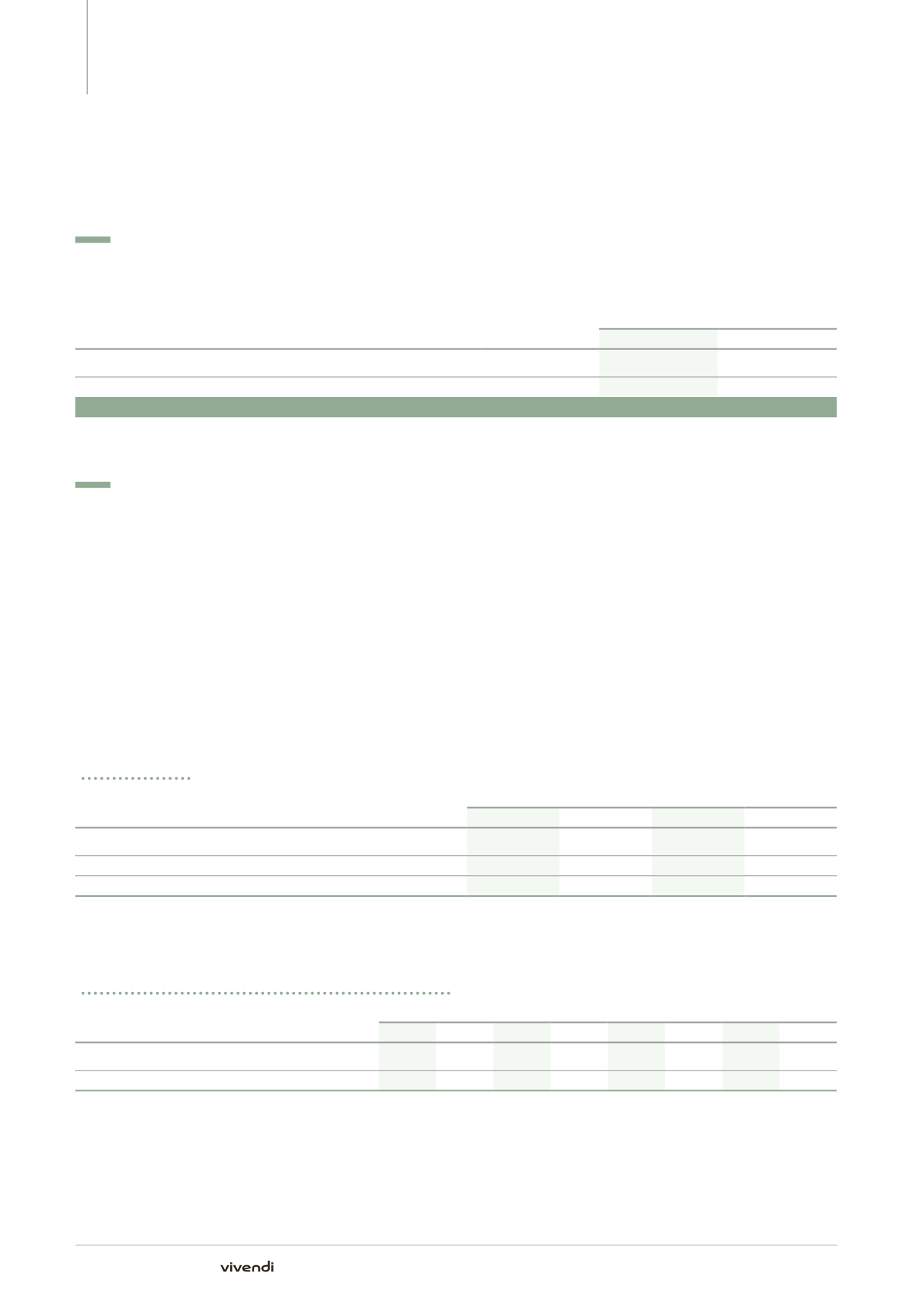

4
Financial Report | Statutory Auditors’ Report on the Consolidated Financial Statements |
Consolidated
Financial Statements
| Statutory Auditors’ Report on the Financial Statements | Statutory Financial Statements
Note 19. Employee benefits
Note 19.
Employee benefits
19.1.
Analysis of expenses related to employee benefit plans
The table below provides information about the cost of employee benefit plans excluding its financial component. The total cost of defined benefit plans
is set forth in Note 19.2.2 below.
(in millions of euros)
Note
Year ended December 31,
2014
2013
Employee defined contribution plans
20
16
Employee defined benefit plans
19.2.2
(10)
1
Employee benefit plans
10
17
19.2.
Employee defined benefit plans
19.2.1.
Assumptions used in the evaluation and sensitivity analysis
■
■
Discount rate, expected return on plan assets,
and rate of compensation increase
The assumptions underlying the valuation of defined benefit plans were
made in compliance with the accounting policies presented in Note 1.3.8
and have been applied consistently for several years. Demographic
assumptions (including notably the rate of compensation increase) are
company specific. Financial assumptions (notably the discount rate) are
determined by independent actuaries and other independent advisors and
reviewed by Vivendi’s Finance department. The discount rate is therefore
determined for each country by reference to yields on notes issued by
investment grade companies having a credit rating of AA and maturities
identical to that of the valued plans, generally based on relevant rate
indices. The discount rates selected are therefore used, at year-end, to
determine a best estimate by Vivendi’s Finance department of expected
trends in future payments from the first benefit payments.
In accordance with amended IAS 19, the expected return on plan assets
is estimated using the discount rate used to value the obligations of the
previous year.
In weighted average
Pension benefits
Post-retirement benefits
2014
2013
2014
2013
Discount rate
(a)
2.9%
3.6%
3.8%
4.5%
Rate of compensation increase
2.0%
2.0%
3.0%
2.9%
Duration of the benefit obligation (in years)
14.7
14.2
10.8
10.0
(a)
A 50 basis point increase (or a 50 basis point decrease, respectively) to the 2014 discount rate would have led to a decrease of €1 million in pre-tax
expense (or an increase of €1 million, respectively) and would have led to a decrease in the obligations of pension and post-retirement benefits of
€66 million (or an increase of €73 million, respectively).
Assumptions used in accounting for pension benefits, by country
United States
United Kingdom
Germany
France
2014
2013
2014
2013
2014
2013
2014
2013
Discount rate
3.75% 4.50% 3.75% 4.50% 2.00% 3.00% 2.00% 3.00%
Rate of compensation increase (weighted average)
na
na 5.00% 5.00% 2.00% 2.00% 3.43% 3.36%
na: not applicable.
254
Annual Report 2014



















